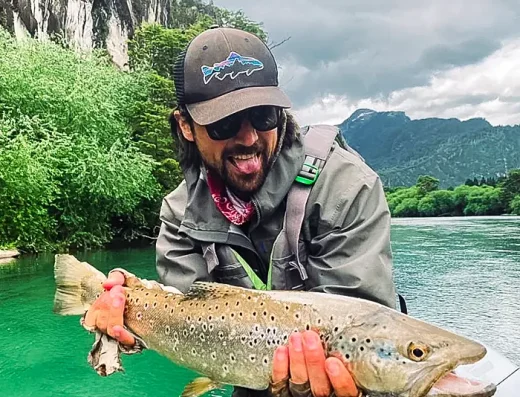Mazatlán Fishing Charters
Mazatlán fishing charters head into the Pacific for marlin, sailfish, tuna, dorado, and wahoo, while also working reefs and estuaries for snapper, grouper, and snook.
Top Rated Charters in Mazatlán
TrustedFish connects anglers with proven local captains in Mazatlán, Mexico—no commissions, no pay-to-play listings, no BS. Every charter on our platform is invite-only, vetted for skill, local knowledge, and reputation. If they’re listed, they’ve earned it.
Mazatlán, MX Fishing Guide
Mazatlán, known as the “Billfish Capital of the World,” sits on Mexico’s Pacific coast in Sinaloa, where warm offshore waters and rich coastal estuaries create one of the country’s most diverse fisheries. Most charters depart from Marina El Cid or Club de Yates, with runs as short as 5–10 miles to reach trolling grounds and deeper water beyond the islands. Half-day trips usually target sailfish, dorado, and tuna just offshore or bottom fish around reef structure. Full-day trips push farther out for blue and black marlin, wahoo, and bigger yellowfin tuna.
The fishery structure is straightforward—nearshore islands like Isla de Venados and Isla de Pajaros provide reef and bottom fishing for snapper, grouper, and jacks, while offshore drop-offs and current lines hold pelagics. Estuaries and mangroves near Mazatlán also produce excellent inshore action, with snook, snapper, and small jacks targeted on light tackle.
Seasonal migrations define the action. Spring brings strong sailfish numbers, while summer adds dorado, tuna, and marlin offshore. Fall is peak for yellowfin tuna and dorado, with marlin still in the mix. Winter slows offshore pelagics slightly but lights up inshore and reef fishing, with snook, grouper, and snapper steady through the cooler months.
Techniques vary with conditions. Offshore charters troll skirted lures, rigged ballyhoo, and teasers for billfish and dorado. Tuna respond to chunking, trolling, and jigging around offshore schools. Wahoo are targeted with high-speed trolling runs. Inshore, light tackle anglers drift live baits or cast lures for snook and jacks, while reef trips use cut bait, live bait, and jigs for snapper and grouper. With both trophy bluewater fishing and sheltered estuary options, Mazatlán is one of Mexico’s most versatile fishing hubs.
Fishing Seasons in Mazatlán
Spring (March–May)
Spring kicks off the sailfish bite in Mazatlán, with boats raising multiple fish in a single outing. Dorado begin to show offshore, and wahoo strike along drop-offs. Inshore, snook and snapper remain steady in estuaries, while reef trips for grouper and pargo are productive. Weather is stable, making this a top season for billfish trips.
Summer (June–August)
Summer brings blue and black marlin to offshore waters, with fish often topping 200 pounds. Dorado and yellowfin tuna are thick, especially around floating debris and current lines. Inshore, roosterfish and jacks patrol the beaches, hitting live bait and surface plugs. Calm seas allow long offshore runs, giving anglers shots at mixed pelagic action.
Fall (September–November)
Fall is peak tuna season, with yellowfin feeding aggressively offshore, often mixed with dorado schools. Blue marlin and sailfish remain in the spread, and wahoo continue along the ledges. Inshore estuaries produce excellent snook fishing, with snapper and grouper active on reefs. This is one of the best all-around seasons for variety in Mazatlán.
Winter (December–February)
Winter cools offshore waters, slowing marlin slightly but keeping sailfish and dorado in play. Inshore action shines this time of year, with snook, grouper, and snapper providing steady action in estuaries and reefs. Barracuda and jacks add excitement near the islands. While offshore trips still run, many anglers focus on reliable reef and inshore fishing in the cooler months.
Gamefish in Mazatlán
- Blue Marlin – 150–500 lbs. Summer and fall offshore, best on large skirted lures and live skipjack.
- Black Marlin – 200–600 lbs. Peak in late summer, taken trolling big baits offshore.
- Sailfish – 60–100 lbs. Strongest in spring and fall, taken trolling rigged ballyhoo and teasers.
- Yellowfin Tuna – 20–150 lbs. Best in fall offshore, targeted with trolling, chunking, and jigging.
- Dorado (Mahi-Mahi) – 10–40 lbs. Summer and fall offshore near debris, taken trolling and casting lures.
- Wahoo – 20–50 lbs. Best in spring and fall along drop-offs, taken on high-speed trolling runs.
- Snapper (Pargo) – 2–15 lbs. Found around reefs and islands year-round, best with live or cut bait.
- Grouper – 10–40 lbs. Reef resident, strongest in winter and spring, targeted with bottom rigs and heavy jigs.
- Snook – 5–20 lbs. Inshore estuaries and mangroves, strongest in fall and winter, best on live bait and plugs.
Mazatlán Fishing FAQs
Where do Mazatlán fishing charters depart from?
Most boats leave from Marina El Cid or Club de Yates, both within the main tourist zone.
What types of trips are common in Mazatlán?
Half-day trips troll nearshore for sailfish, dorado, and tuna, or fish reefs for snapper and grouper. Full-day trips run offshore for marlin, wahoo, and big tuna.
Do I need a fishing license in Mexico?
Yes, all anglers require a valid Mexican fishing license, which is usually handled by the charter operator.
When is the best time to fish Mazatlán?
Spring is peak for sailfish, summer for marlin and dorado, fall for tuna and mixed pelagics, and winter for inshore and reef species.
What techniques are used by Mazatlán captains?
Offshore trolling with lures and ballyhoo is standard. Tuna are targeted with chunking, live bait, and jigging, while inshore trips use bait rigs and lures for snook and snapper.
What fish can I catch in the winter?
Snook, snapper, grouper, and jacks are common in estuaries and reefs close to shore.
How close is the fishing to shore?
Pelagic waters start just 5–10 miles offshore, and productive reefs and islands are even closer.
How many anglers can fish on a Mazatlán charter?
Smaller boats take 2–3 anglers, while larger sportfishers can carry 4–6 or more comfortably.
Are combo reef and offshore trips offered in Mazatlán?
Yes, many captains combine trolling for sailfish and dorado with bottom fishing around reefs for snapper and grouper.

